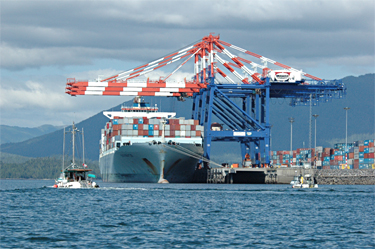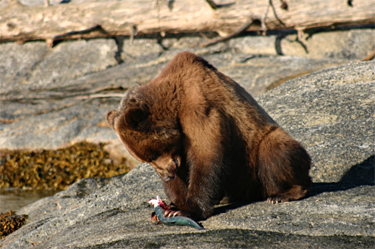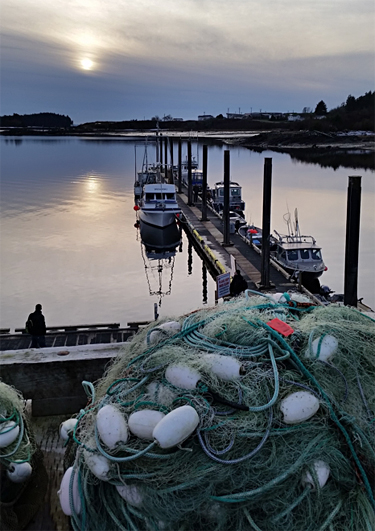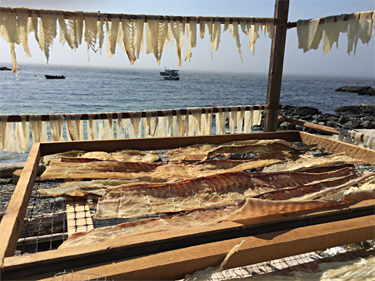Growing up in the rolling savannah of Botswana in southern Africa, Maya Paul could never have imagined that she would one day find herself living amid the rain forests of British Columbia’s north coast. Yet that’s exactly where her expertise in strategic planning and engagement has led her.
In January 2016, Maya was appointed cumulative effects coordinator for the North Coast MaPP sub-region, working on behalf of both the North Coast Skeena First Nations Stewardship Society and the Province of B.C. “My role is to coordinate the collaborative development and implementation of a MaPP cumulative effects framework in the North Coast,” she says.

Container traffic in Prince Rupert has increased at a faster pace than any other North American port. Photo credit: Maya Paul.
Cumulative effects are changes to environmental, social and economic values that are caused by the combined effects of past, present and reasonable foreseeable actions or events. Maya has the task of coordinating the development of a framework that accounts for changes to core marine values from human activities on a large stretch of coastline in northern B.C. that includes First Nations communities and the bustling hubs of Prince Rupert, Terrace and Kitimat. Development is being proposed at a rapid pace in the region and Paul hopes to pinpoint the major concerns of coastal communities around effects on core values from the rush of new projects, several of which are still in the midst of environmental assessments.
“A key component of the framework we are developing involves defining the core values of people in these communities,” notes Maya. “Once we identify the core values we have to establish indicators for those values, prioritize them, create a monitoring system, and then try to anticipate how those core values might change over time.”

Understanding core values is a key component of cumulative effects assessment. Photo credit: Birgitte Bartlett.
Although core values can be basic things like clean water, clean air and healthy food, her work also addresses the effect of development on socio-cultural and economic values, which can be harder to define. “For example, First Nations worry that their access to traditional resources will change from impacts to the health and quality of their seafood, socioeconomic impediments, or access to the harvest areas,” explains Maya. The framework is intended to guide management and regulatory processes in order to improve the stewardship of coastal and marine ecosystems and resources, and the human well-being of coastal communities. “Ultimately, the goal is to sustain the core coastal and marine values over the long run.”
The theme of sustainability has been a major driver in Maya’s life since she left Africa and attended the University of Guelph in Ontario where she earned a Master of Science in Environmental and Resource Economics. She also holds a Bachelor of Science in Environmental Science.

Calculating cumulative effects in marine ecosystems is challenging because values and impacts often cross jurisdictional boundaries. Photo credit: Allison Paul.
The MaPP governance structure established to implement the North Coast Marine Plan is unique in that it involves a collaborative working arrangement between two governments: provincial and First Nations. Creating clean lines of communications between the two camps is at the crux of Maya’s work. “I love bringing people together to ensure sustainability. It’s all about working collaboratively. You can’t accomplish anything enduring unless you bring the different decision-making groups together to sit in the same room and collaborate.”
“The cumulative effects framework that is developed by the MaPP partners here will inform the partners’ approach to stewardship on the North Coast moving into the future,” explains Maya. “We expect it to be a living document.”
Download A Framework for the Assessment and Management of Cumulative Effects on the North Pacific Coast.





